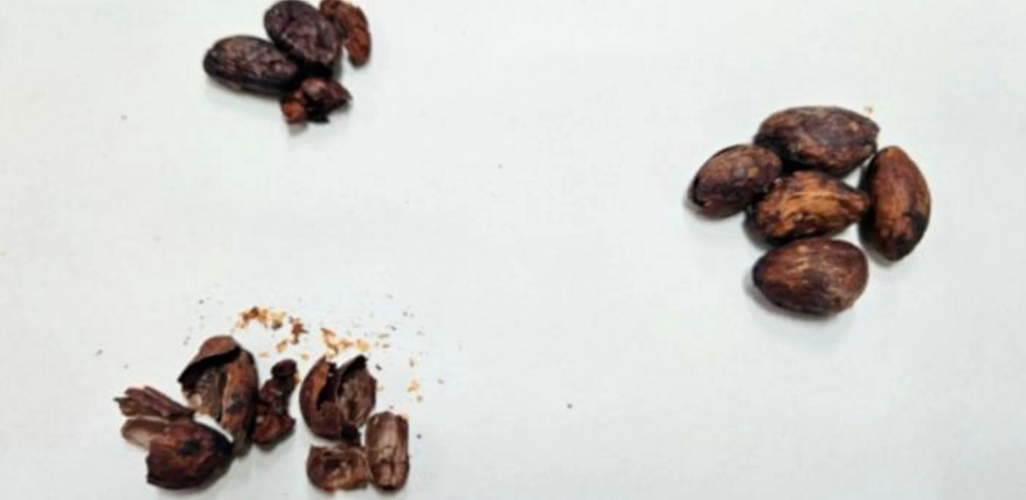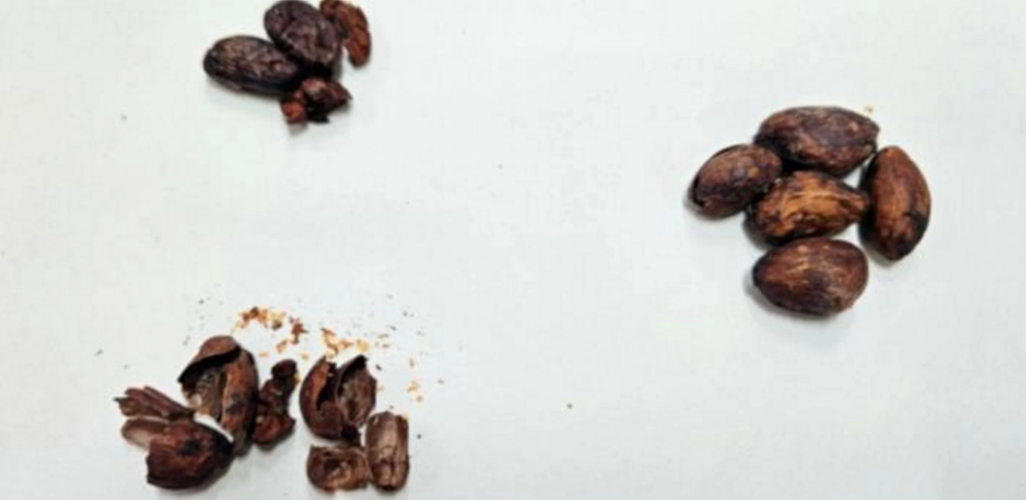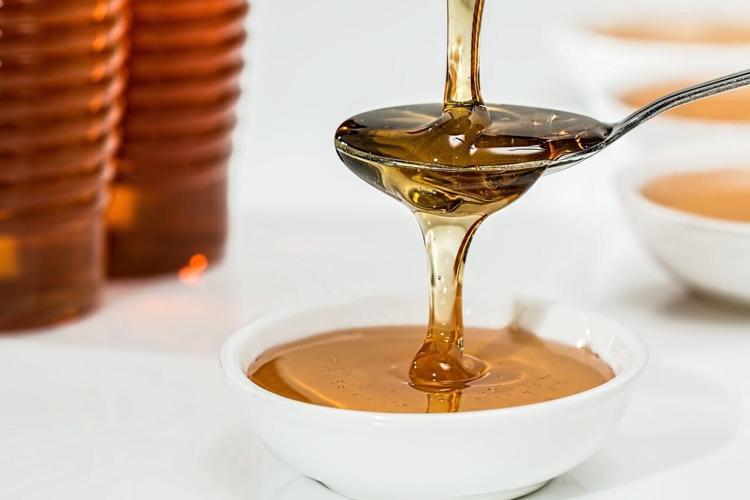
(FelipeBragagnolo/FCAUNICAMP via SWNS)
By Stephen Beech
Chocolate-flavored HONEY has been created by scientists in Brazil.
The team used a product from native stingless bees to extract bioactive compounds - such as caffeine - from chocolate manufacturing waste.
They say the process adds nutritional and commercial value to an ingredient that is usually discarded.
Researchers from the State University of Campinas (UNICAMP) developed the new product.
It is made from native bee honey and cocoa bean shells and can be consumed directly or used as an ingredient in food and cosmetics, according to a study published in the journal ACS Sustainable Chemistry and Engineering.
The researchers used native bee honey as an edible solvent to extract stimulants such as theobromine and caffeine, linked to heart health, from cocoa bean shells.
The shells are usually discarded during the production of chocolate and other cocoa derivatives.
The ultrasound-assisted extraction process also enriched the honey with phenolic compounds, which have antioxidant and anti-inflammatory properties.
Researchers who tasted it say that, depending on the ratio of honey to shells, it has a "strong" chocolate flavor, although they are still planning tests on the product’s taste and other sensory properties.

Photo by Pixabay via Pexels
Study first author Dr. Felipe Sanchez Bragagnolo said: “Of course, the biggest appeal to the public is the flavor, but our analyses have shown that it has a number of bioactive compounds that make it quite interesting from a nutritional and cosmetic point of view.”
The team is now looking for a partner interested in licensing the patented process and bringing the product to market.
As well as promoting the sustainable use of local biodiversity, honey from native bees was chosen for its greater potential as a solvent because it generally has higher water content and lower viscosity than honey from European bees.
Honey from five species found in Brazil was tested, while the cocoa shells were provided by the São Paulo State Department of Agriculture.
Mandaguari honey was initially chosen for process optimization due to its intermediate water and viscosity values.
Dr. Bragagnolo says that honey is highly susceptible to external influences, such as climate, storage conditions, and temperature.
He said: “Therefore, it’s possible to adapt the process to locally available honey, not necessarily mandaguari honey."
Dr. Bragagnolo explained that ultrasound-assisted extraction involves placing a probe, similar to a metal pen, inside a pot containing honey and shells.
The probe uses sound waves to enhance the extraction of compounds from the shells, which then migrate to the solvent – in this case, honey.
Dr. Bragagnolo says the method is efficient because it creates microbubbles that implode and temporarily increase the temperature to break down the plant material.
The technique is considered environmentally friendly in the food industry because it is faster and more efficient than other methods.

Photo by Igor Haritanovich via Pexels
That was one of the positive points in another assessment included in the study, which measured the product’s sustainability.
A sustainability tool verified compliance with 12 principles of green chemistry - including transportation, post-treatment, purification, and application.
Using an edible, local, ready-to-use solvent was one of the most important factors.
On a scale of -1 to +1, the product scored +0.118.
Dr. Mauricio Ariel Rostagno, Dr. Bragagnolo’s postdoctoral supervisor and coordinator of the study, said: “We believe that with a device like this, in a cooperative or small business that already works with both cocoa and native bee honey, it’d be possible to increase the portfolio with a value-added product, including for haute cuisine."
The team is preparing further studies to evaluate the effect of ultrasound on honey microbiology.
Dr. Rostagno added: “Honey from native bees usually needs to be refrigerated, matured, dehumidified, or pasteurized, unlike honey from European bees, which can be stored at room temperature.
"We suspect that, simply by being exposed to ultrasound, the microorganisms contained in the honey are eliminated, increasing the stability and shelf life of the product."
The team plans to test other applications using honey from native bees as a solvent for ultrasound-assisted extraction, including processing other plant residues.

























(0) comments
Welcome to the discussion.
Log In
Keep it Clean. Please avoid obscene, vulgar, lewd, racist or sexually-oriented language.
PLEASE TURN OFF YOUR CAPS LOCK.
Don't Threaten. Threats of harming another person will not be tolerated.
Be Truthful. Don't knowingly lie about anyone or anything.
Be Nice. No racism, sexism or any sort of -ism that is degrading to another person.
Be Proactive. Use the 'Report' link on each comment to let us know of abusive posts.
Share with Us. We'd love to hear eyewitness accounts, the history behind an article.